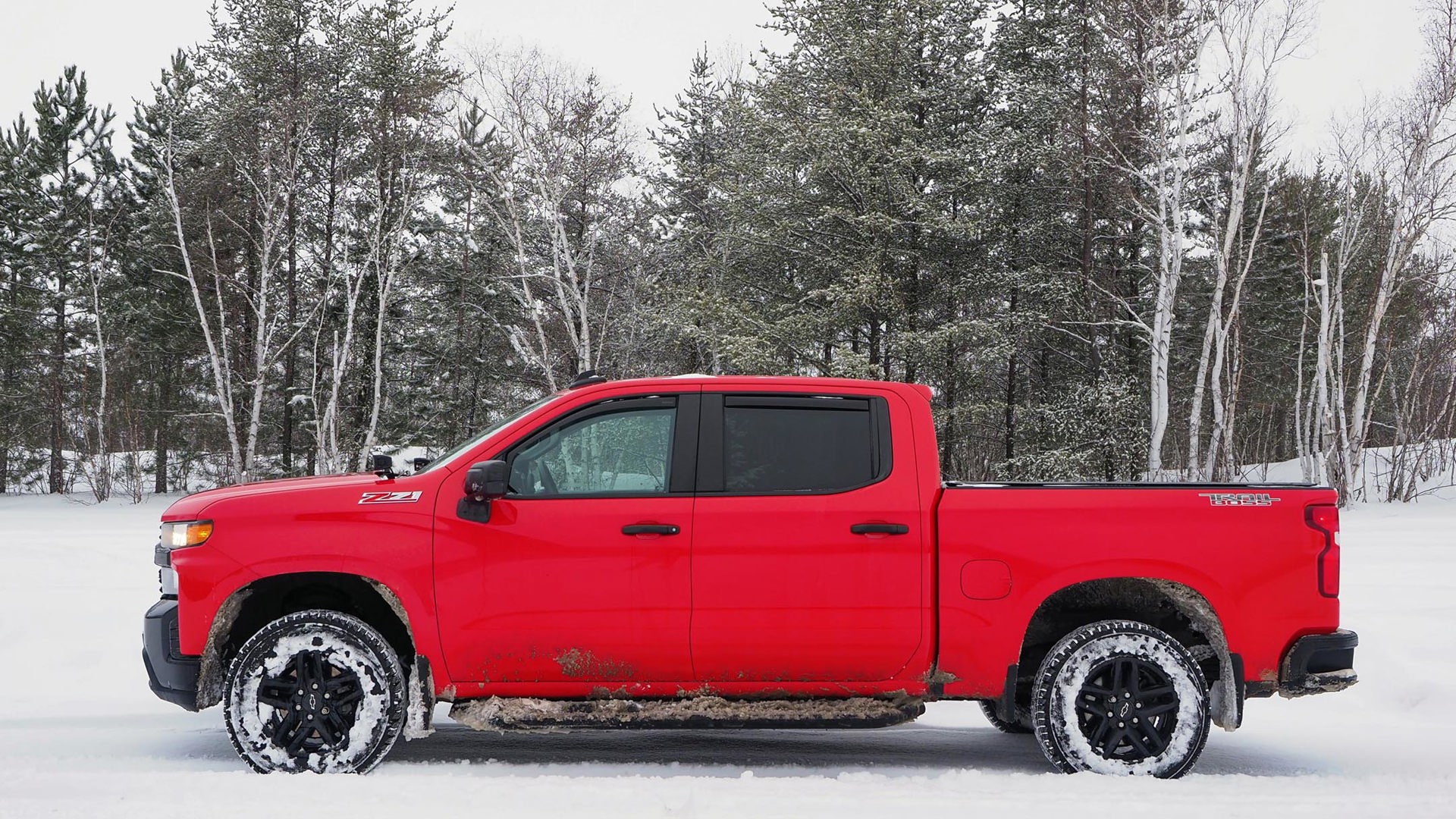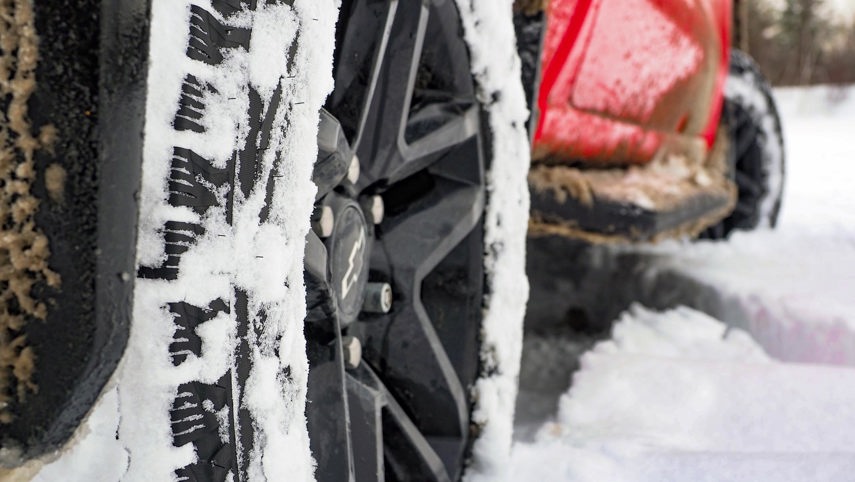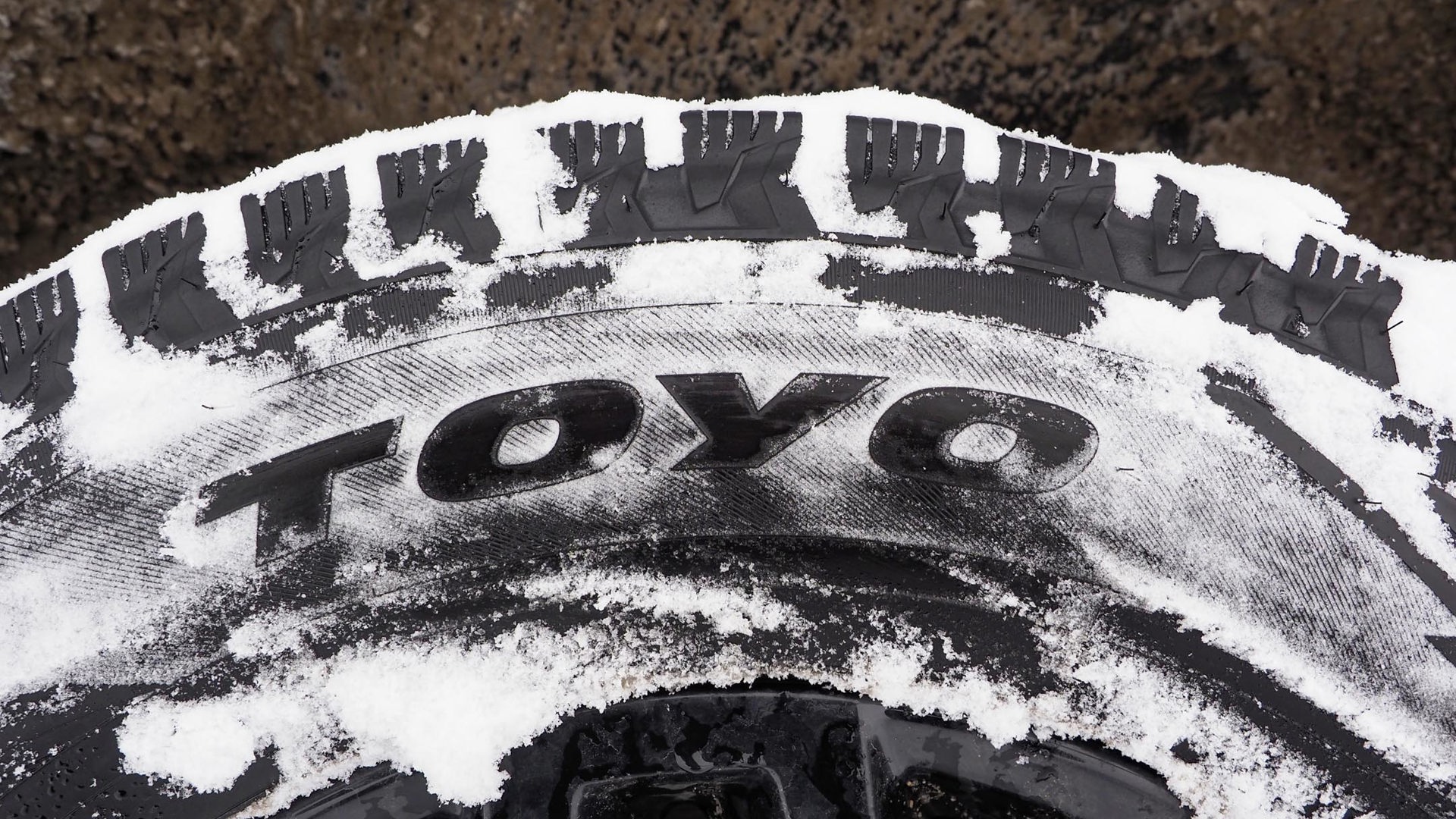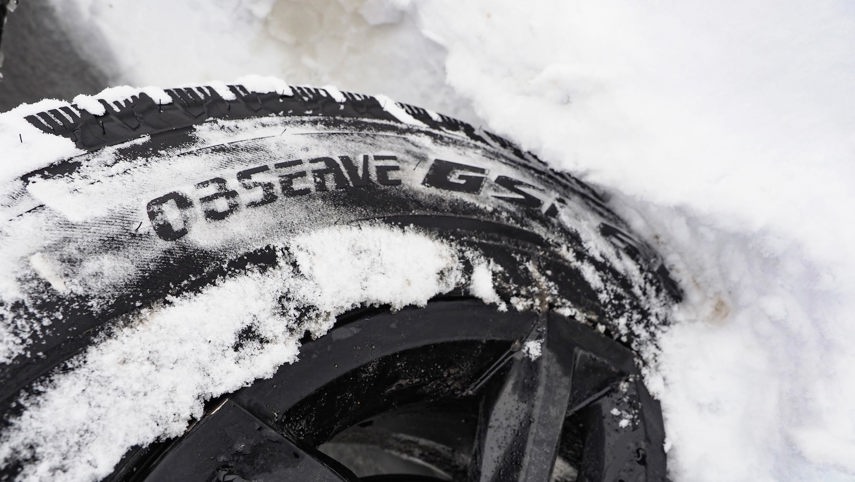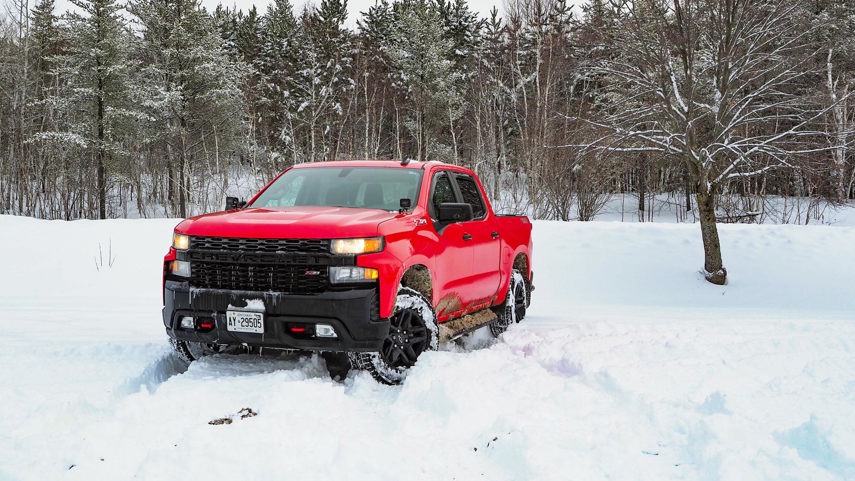Though more Canadians are catching on to the benefits of using dedicated winter tires, many pickup and SUV drivers remain likely to run just a single set of tires all year round.
Jeff Major is one of those drivers.
A long-time friend and fellow Sudbury resident, he and his family use a Chevrolet Silverado Trail Boss for weekend adventures that often include sledding, towing, boating, camping, and off-road driving in remote locations.
Major has driven pickups for ages, and like many owners, he chooses to run a single set of tires all year round.
For the past two winters in his Trail Boss, Major ran a set of Goodyear Wrangler Duratracs, a common choice for drivers in Northern locales who want a tire that’s rugged, dependable, and tough enough to stand up to our badly crumbling backroads and off-road trails. These tires come Severe Snow Certified in most sizes, but not the particular size fitted to Major’s truck.
“I liked the Duratracs for the price, and I found the performance in snow to be acceptable,” Major explained. “Initial winter driving on the Duratracs seemed fine with acceptable handling and braking. Thing is, they fell flat on their faces in slick conditions, like ice and hard-packed snow. I knew winter tires would be an improvement, having used them before on my cars, but never my trucks.”
Major knew there was an improvement to be had by making the switch to dedicated winters, but not how significant that improvement would be.
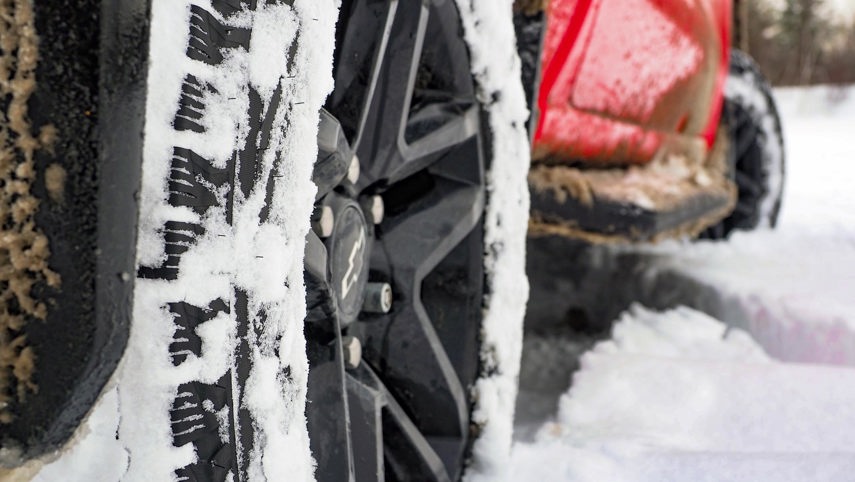
For this report, I’d switch Major from his non-winter-rated Duratracs to a set of Toyo GSi-6 LS tires: a dedicated winter tire that’s easily amongst the best I’ve ever encountered testing various trucks and winter tires in the unforgiving winter conditions of Northern Ontario.
The Toyo GSi-6 LS tires are one of my go-to recommendations for a dedicated pickup truck winter tire alongside other favourites including Michelin X-ICE and Nokian Hakkapeliitta.
[Full disclosure: Toyo sent over this set of test tires for free, and as a multiple award-winning road safety journalist who’s made a living testing cars and tires in the winter for the better part of two decades, you’ll be hearing only my unfiltered impressions as always.]
After the first heavy snowfall of the season, I texted Major to gather his initial impressions about his maiden voyage on dedicated winters.
“Definitely a holy crap moment!” he replied, adding, “I knew they’d be good, but not as good as they turned out to be.”
Text messages like these came often in the coming days, as the snow and ice piled up.

A few snowstorms later, I logged a few additional hours of testing behind the wheel of Major’s newly GSi-6 LS-equipped Trail Boss as a refresher. Later, we compared notes to confirm key observations of the Toyo rubber, and Major’s impressions of the difference between them and his non-winter Duratracs.
“I had this realization that I could go about my neighbourhood, riddled with icy intersections, without using four-wheel drive,” Major explained. “If the traction control even kicks in now, it’s only in pretty extreme situations with lots of ice or very loose slush.”
This makes for a quieter, more controlled, more refined, and more drama-free ride. The added traction and grip help the Trail Boss’ limited-slip rear axle work better, too. There’s less need to engage four-wheel drive, and the truck experienced higher traction thresholds before the 4x4 self-engaged in the automatic setting.
This means light-footed drivers will find the truck pulls nicely through the snow with a little patience and much less need to engage four-wheel drive, which can help save fuel – a concern for Major, who tries to keep things in two-wheel drive wherever possible.
“It’s a quieter and smoother drive now, with less noise from that rear axle engaging and disengaging. Actually, I find the Toyos super quiet and comfortable in terms of the ride, and the quieter drive was the first thing I noticed,” he said.
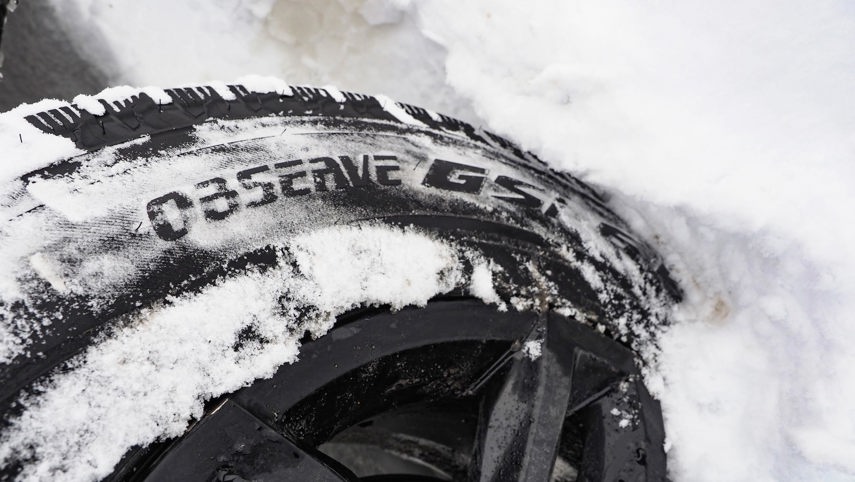
The differences in emergency stopping performance are also massive. After various stopping and evasive handling tests with the Duratrac rubber on snow, ice, and hard-packed slush, Major and I experienced some slipping, sliding, a tendency for the truck to carry on straight when trying to stop and steer simultaneously, and numerous lengthy foot massages from the brake pedal, as the ABS system fired away frantically trying to find some traction.
With the Toyos, there was virtually no sliding, less (and smoother) ABS engagement, and a notable shove out of our seats and into the seatbelts, in place of the greasy, slippery feel of the Duratracs on the same surfaces.
The Toyo GSi-6 LS tires shine because they feel consistently reliable and eager to perform across a wide range of winter driving situations. Whether on powder, hard-packed snow, cold pavement, ice, or slush, drivers can expect to feel sure footed while accelerating, steering, braking, or making evasive manoeuvres. Some tires excel in some situations and falter in others, but the Toyos are well-rounded to tackle a wide array of conditions.
On one drive through a snow-covered backroad on the new Toyos, Major noted a reduction in stress levels and driver bandwidth when it came to getting around.
“It’s much like the snow isn’t even there,” he said. “I don’t have to work as hard to feel safe and in control, and you can cover slippery ground more quickly and comfortably.”
Both Major and I also admire the way the GSi-6s handle slush stripes on the highway – you know, the ones that yank your steering from your hand and make your truck get all squiggly beneath you as they grab at the tires. Very common on Northern highways as temperatures rise after heavy snow, these slush stripes can make driving stressful, but not on a set of GSi-6s.
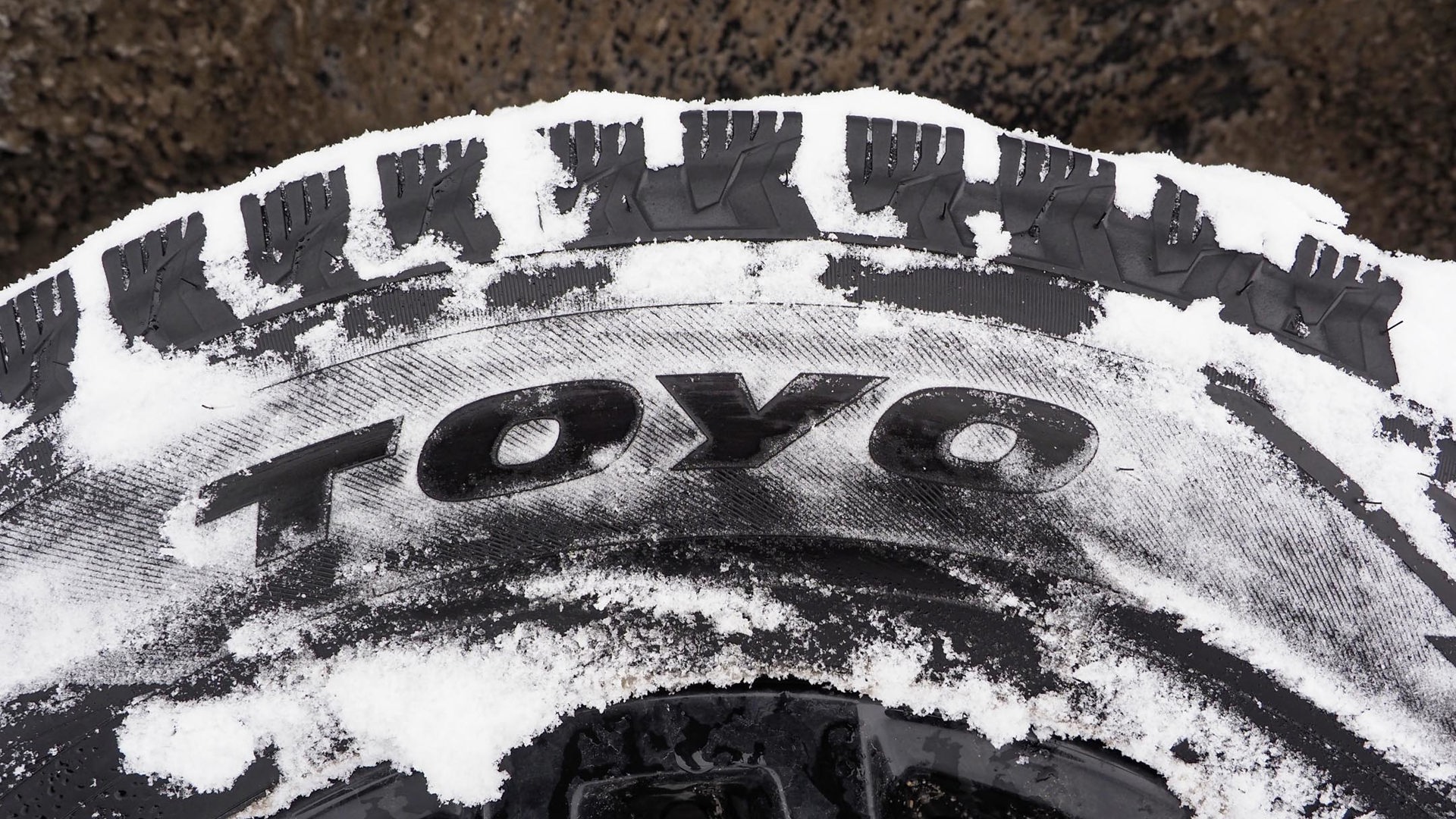
The Toyos evacuate this sort of slush brilliantly. In the Silverado, there’s virtually no feedback detectable through the steering nor any upsetting of the truck’s poise on the road as slush is ejected aggressively from the treads.
In deep snow on bumpy surfaces, we noted plenty of traction for satisfying digging and forward momentum, even when virtually stuck in knee-deep powder and ice. If you manage to get stuck here, a quick escape generally requires a little rocking and little else. These tires can work wonders with just a little momentum.
There’s rarely a need to turn off the traction control system, whose performance is enhanced by the extra grip on the snow’s surface. That means a smoother and less dramatic ride even as the truck struggles for grip, adding to a sense of point-and-shoot confidence.
We also noticed strong braking bite in powder deep enough to bury half the Silverado’s wheels, though both Major and I were left wanting for a little more stopping bite on hard packed surfaces with some loose snow on top. This is a challenge for most non-studded winter tires, and an area where I wished for a little stronger performance from the GSi-6s.
Emergency stopping in a straight line between 60 and 90 km/h sees strong initial bite under braking and late engagement of the ABS, two strong signals to the driver that everything’s going as it should. Still, in this specific situation, the GSi-6’s performance elsewhere saw us expecting a stronger shove out of our seats under hard braking. In this specific situation, a comparable set of Michelin X-Ice or Nokian Hakkapeliitta rubber may inspire additional confidence.
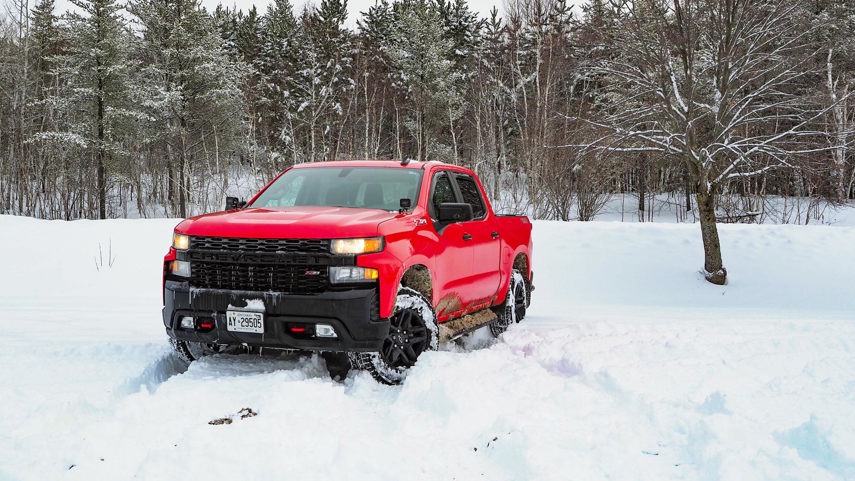
If you’re smooth and gentle with the controls, driving on messy surfaces with these tires often feels similar to driving on bare pavement in terms of cornering grip, braking performance, and acceleration in four-wheel drive. The laws of physics still apply, of course, but used with your safe and careful driving, winter tires this good take the stress out of driving in terrible conditions.
The Toyo GSi-6s have easily earned their place as my most-recommended winter tire and are good enough to make Major a permanent believer in the merits of winter tires.

